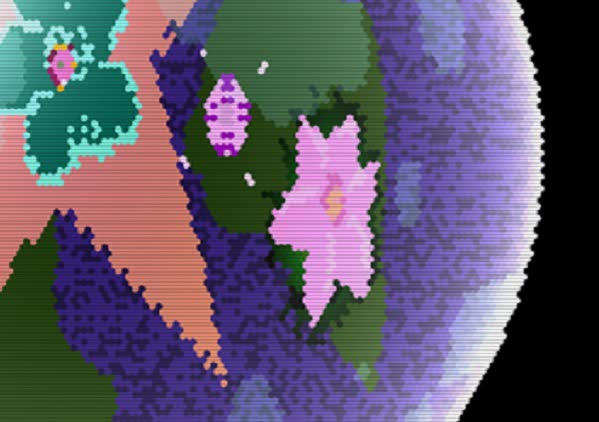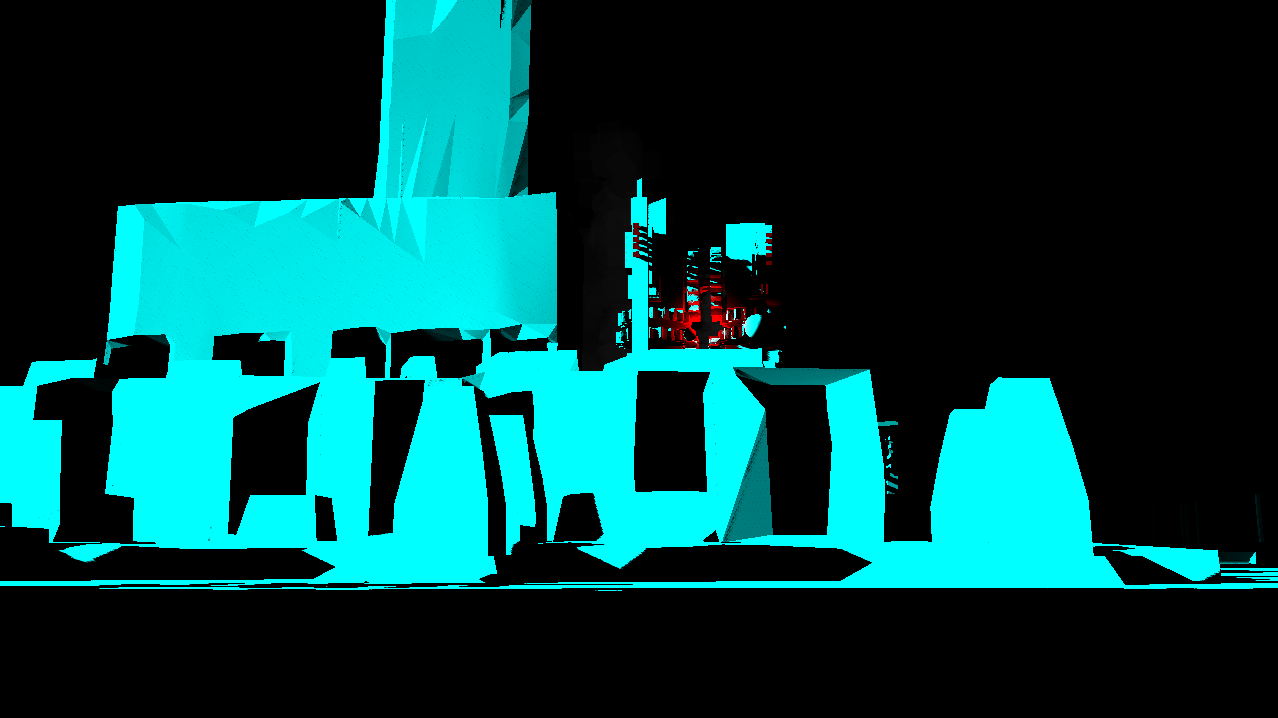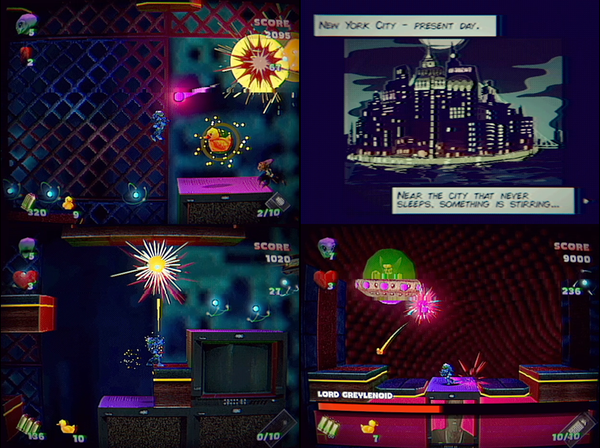Warp Door's Pocket Dimension - As You See It

Interpretation is an activity that can be employed to expand your mental capacity and give your brain a stretch. In this week's Pocket Dimension, you're going to exhaust yourself in a work-out of interpretating many little games.
The title "As You See It" refers to the purpose of most of this week's games, which as I see it, is to encourage us to bring ourselves into our understanding and reading of them. That might also explain why I've blabbed on for much longer than I meant to in some of the write-ups. It's that, or I've been more affected by the heat this week than I realized, causing me to ramble.
Yeah, it's the heat, isn't it?
BANANA CHALICE (Kyle Reimergartin)

Why play it? As soon as the silver cat jumps through a series of interdimensional tissues, falling (or flying?) into the abyssal and psychedelic tunnel that most of the game takes place in, you forget to search for context. There are too many vibrant elements being added to the list of unexplained features that its best to just accept it as you see it.
BANANA CHALICE is a tunnel shooter about collecting bananas to shoot at ghosts and other, creepier enemies that give chase. It can be played solely by dodging, however. Without the focus on shooting, it's possible to further engage in a fastidious relationship with the colourful flora and sludgy textures of the surrounding tunnel.
The tunnel's ecosystem seems to shift by stage, the further you go in, inciting you to travel further and further. Unsurprisingly, the bananas don't have the most useful ballistics, as the spinning crescents fly slowly with little chance of hitting what you aimed at.
It's more of a meditative and easy-going shooter, then, and that's fine as it's probably best enjoyed for its kaleidoscopic wonder.
Download here (unfinished) (Windows)
care&control (Arielle Grimes)

Why play it? I think the idea behind this is to remind you that you can have too much of a good thing. It's described as a relaxing exploration game, and involves flying a blob fairy around your little world and growing the flowers bouncing around its surface.
Delightfully, you use a magic wand (tied to your mouse) to sprinkle shimmering rainbow smears that grow your flowers. If you grow the flowers too much they become far too large for your world, shaking inside their newfound cage due to their enormous size. Incapacipated by growth, they vibrate into distorted colors, like continent-sized graffiti.
These large flowers do seem to encumber stress at first. You've made a mistake by making them grow too much, and you can't take it back. It certainly feels like they shouldn't be just by the way they almost seem to break the game.
But I found that in growing all of the flowers to a world-engulfing size, they form a new vibrant skin over the globe. If you can let go of the stress tied to this aesthetic, it's possible to enjoy the new world you've created from twitching, over-sized petals. You may interpret this as becoming carefree, and letting your worries wash over you to become part of your new identity.
Download on itch.io (Windows, Mac, Linux)
Get X Avoid Y (Pippin Barr)

Why play it? Pippin Barr created Get X Avoid Y in order to allow himself, as well as players, to play with aesthetic. He maximizes this goal by employing a rudimentary binary interaction that focuses on objects over everything else. Quite simply, you have to click one type of object as it bounces around the screen, avoiding clicking on another.
These preferential politics play to our tendency as humans to draw connections between two or more objects. The outlined goal of each round in Get X Avoid Y may have no underlying motive or meaning, but it's likely we'll attach one. Such as the implications of clicking to remove all white characters from the screen while avoiding people of color. We might think this genocide reveals a characteristic of Pippin's politics, as it was him that set up this scenario, but without a visible consequence to the interaction it's too abstract for finite meaning. What's perhaps encouraged, then, is for us to project our own politics onto it, pushing our own meaning onto the dual at play.
Other objects are sometimes even more abstract than that previous example, so much so that they seem to lend themselves better to puzzling our perception. A series of black lines, some with a red circle on the end while others are without it, becomes a very difficult deciphering challenge. It's almost inevitable that you'll accidentally click on the wrong object. There are also some rounds in the game that present the exact same object twice, telling us to simultaneously "get" and "avoid" it, which forces us to question both our ability to observe difference, as well as the value of such an ability.
In presenting two symbols, one to eradicate the other to avoid, Get X Avoid Y provokes the semiotics of a conflicting relationship. Even if accidentally on Pippin's part, or incidental on ours, it becomes an interesting (perhaps even revealing) exercise in our own appropriation.
Play here (Browser)
Road to Ruin (TomCooper3D)

Why play it? Drenched in blue and black, Road to Ruin is an entirely interpretative first-person wander through a mountainous world littered with glowing-red spinning cogs and pumping machines.
Smaller robots buzz with electricity as they fly overhead, and there are pillars of rock to walk around, some of which suggest traces of a civilization in how they seem to be carved.
The idea behind Road to Ruin is to experiment with how games communicate feelings and stories non-verbally. The mechanized sculptures endlessly grinding, and the sounds of sizzling machine parts certainly provoke a daunting uneasiness and a lot of questions.
Get beyond that first part, and it gets even more interesting...
Play on itch.io (Browser)
O Trivial Lobotomy (greenio3)

Why play it? Most narratives tend to be planned out with the purpose of delivering a climax. But O Trivial Lobotomy sees its creator tapping into stream-of-consciousness writing. It's therefore not confined by the constraints of structure and making sense.
The story is told by a number of strange heads that call you Jeff. They ask you questions and seem hostile, like voices in your head telling you to do devious acts.
The result is nonsense, really, but as it's all drawn loosely around the themes of health and physical appearance that there's enough there for you to potentially interpret a disturbing narrative from it.
The small session of challenging play you'll revisit between each talking head involves spinning a blockade around your heart. The idea is to prevent various objects (suggested to be medication) from crashing into it as they attack from all sides of the screen. Your potential motive behind this protective behavior is sometimes threaded into the words of the talking heads, which may eventually tempt you to deliberately fail to see what happens (spoiler: you're not allowed to fail).
Download on Game Jolt (Windows)





